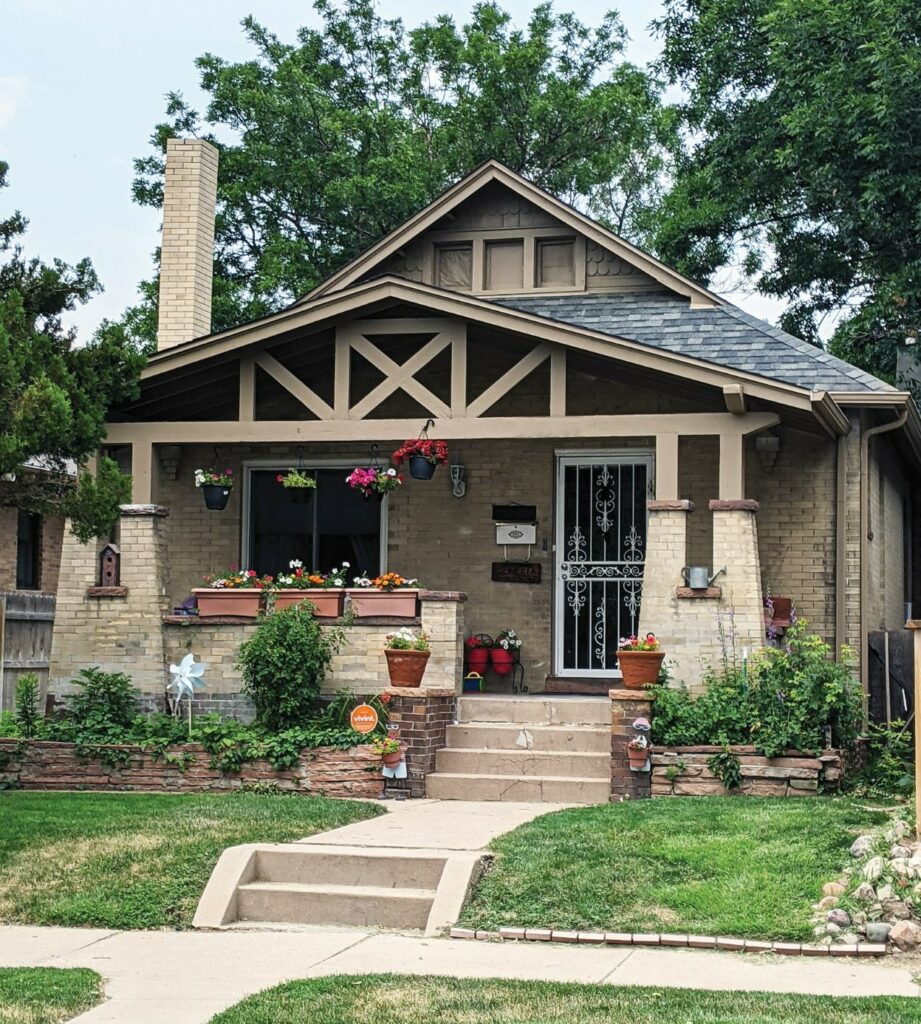
Is someone’s choice in home design a personal decision or is there an obligation to the community? Should a homeowner be able to build a home with features that are different from older styles or should newer builds resemble older ones? Is a turn-of-the-century 1900s brick bungalow more attractive than a taller home built with modern materials? Is the newer home with a roof deck and open floor design more practical for modern usage? Should these questions impact what’s allowed? These are a few of the questions being asked in numerous communities across Denver as the city continues to grow and change.
A new proposed set of regulations in North Denver is being brought to the community this month. While the most recent proposal only directly impacts the Sunnyside neighborhood, it is similar to a recent change to building regulations in the Harkness Heights community in Berkeley as well as the decades old creation of the Potter Highlands Historic District. If approved, it could also be replicated in other older neighborhoods in North Denver and across the city. While separate, the conversation also overlaps with the neighborhood planning initiatives happening across the city including in a half dozen North Denver neighborhoods.
Walk down most streets in Sunnyside and you’ll see a fair amount of older brick homes, as well as a variety of other types. Increasingly, you’ll also see more modern styles, especially duplexes that stretch higher with roof decks above the 2nd story accessed by a partial 3rd story, sometimes called “wedding cake” homes because of their tiered design. That last style is the target of some community members and Councilwoman Amanda P. Sandoval, who are seeking to restrict new homes to older styles and ban some design aspects common in new builds. The overlay plans are in their initial stages and the community is invited to give feedback as it progresses.
The “Sunnyside Conservation Overlay” is the most recent in a series of zoning overlays. While there are several different types, overlays mostly function the same: the zoning code dictates how many stories a building can be, how many units (single family, duplex, etc), and other fundamentals. An overlay is, as the name implies, additional regulations on top of that zoning and can dictate more specifics on form and style.
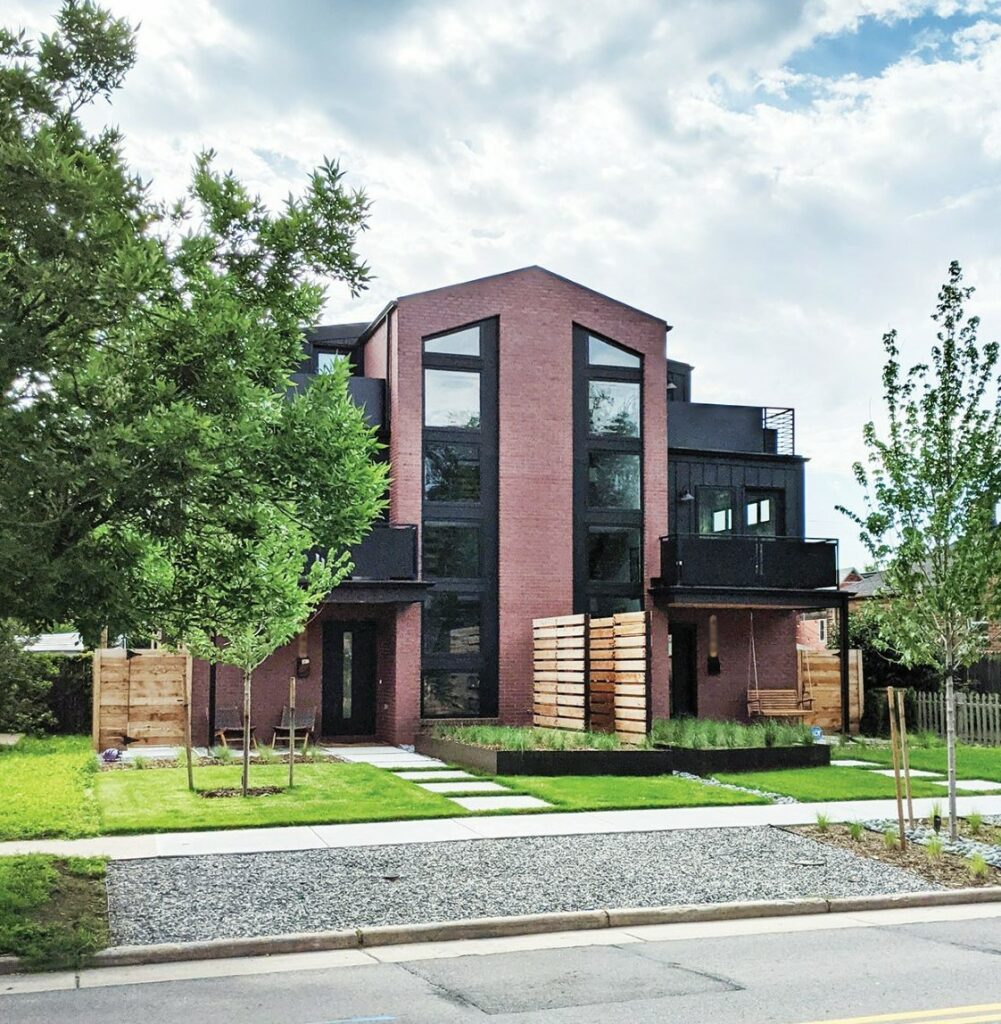
The overlay comprises several key points: the most impactful is a change to the bulk plane. Imagine an invisible box around a home — that’s the bulk plane and that box sets the parameters for how much home can be built and in what shape. A proposed change to the bulk plane combined with a building height limit of 22’ for flat roofed buildings (pitched roofs can go to 30’) are the most impactful in terms of overall design. Other requirements being considered include a requirement for a covered front porch, a 3000 sq ft cap on home size (not including basement and garage), requiring the home be raised on a base of 1-3ft, and a requirement for homes to be built with brick.
The proposal now being forwarded to the community has been years in the making, originally started by former city planner and Sunnyside resident Katherine Cornwell during Councilman Espinoza’s tenure. Cornwell has worked as an architect for 30 years including 8 for the city and has lived in the neighborhood for 20. The proposal has since been modified by the Sunnyside registered neighborhood organization and is being sponsored by Councilwoman Sandoval. The Denver North Star interviewed several proponents of the measure. We also sought responses from residents of “wedding cake” and similar home styles which would be banned (existing homes are not affected — the overlay only affects new builds). In an effort to include as many perspectives and as much information as possible, opinions from many interviews are summarized in the arguments below:
Regarding the fundamental question of why restricting home designs is important, proponents had a variety of answers. For Cornwell, “the goal of the conservation overlay is not to restrict development potential but to attempt to ensure new construction is more visually harmonious with [the] prevailing patterns that make this original Denver neighborhood so attractive.” For her, the underlying question is whether there is a prevailing, measurable, identifiable character to the neighborhood and whether that character is something the community sees value in preserving. She believes there is such a character and it is worth it. Most of the neighborhood committee explained variations on character concerns, ranging from the overall height and loss of privacy (roof decks can see into neighbors yards), the overall size and “bulk” of new homes, which dwarfs some of the smaller, older homes in the area. Bill Hare, head of the committee, summed it up as “The wedding cake duplexes are the instigating factor that got this going.” Hare says the committee looked at a number of options, including a potential historic district, but he feels that would have been too restrictive and that this proposal is a good middle ground.
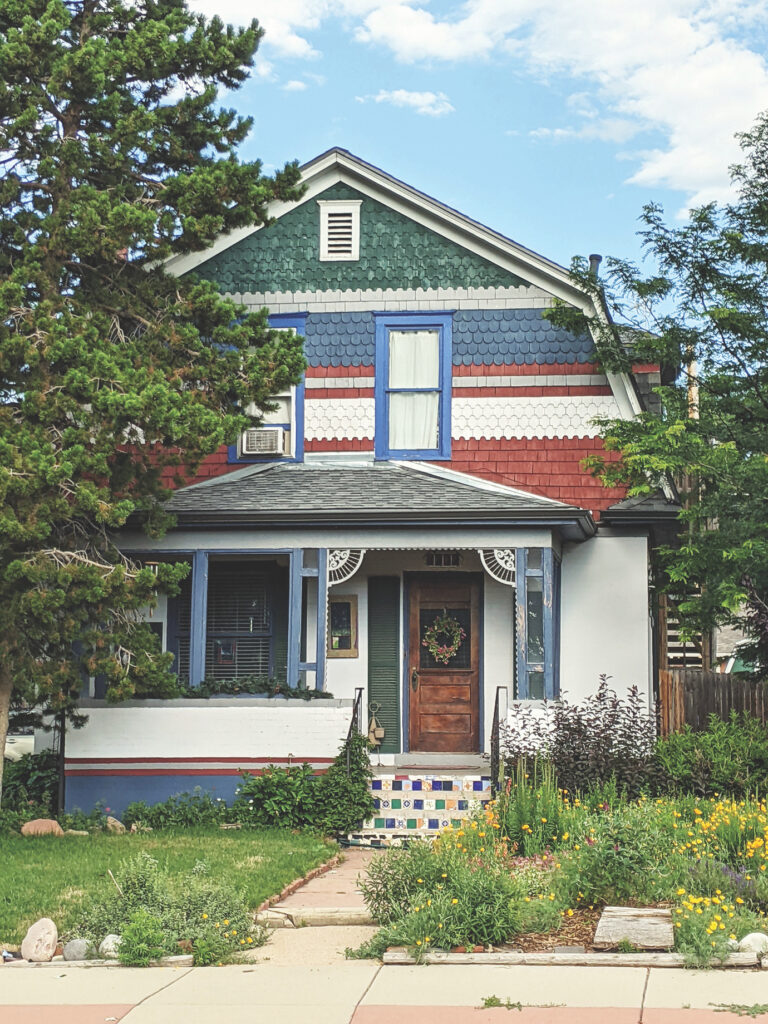
Kevin Anderson, an architect who serves on the committee, explained that each proposed aspect can be considered independently and that each has its benefits but that the community could support or reject the different points, each of which has benefits in the eyes of the committee. Regarding porches, he noted “It’s inviting. It’s a place to meet your neighbors,” adding that some older Tudor style homes in the neighborhood were not built with them, but many owners have been adding them during renovations. He also says porches help “break [homes] down to a human scale,” creating a more inviting feel while serving the functional roles of keeping water off a front door and creating street access.
Councilwoman Sandoval’s office emphasized that while she may sponsor the overlay, the concept came from the community. Asked why she felt this proposal warranted her sponsorship, she said:
“I feel it is important I respond to the concerns we have heard for years regarding redevelopment within the Sunnyside community. Zoning is one tool we have to create better outcomes and more predictability when infill homes and/or duplexes are built. Northwest Denver has some of Denver’s original neighborhoods, such as Sunnyside, and it is important for us to take cues from our built environment such as building homes with porches and allowing dormers to expand homes as families grow. The proposals which have come from residents help create predictability and the intent is to create a better quality of life for the next seven generations of Denverites. I look forward to hearing from the residents of Sunnyside and gaining feedback from our neighbors.”
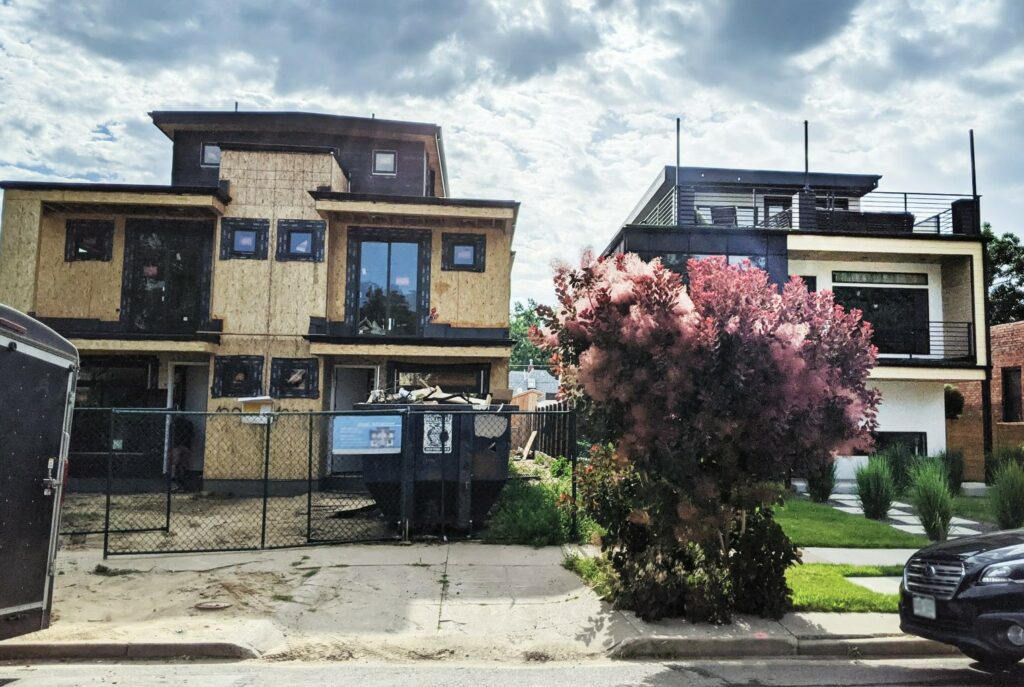
Some aspects, such as whether this could keep home prices lower, were in dispute from different committee members. Some argued the overlay will help keep prices down by making scrapes less appealing when renovations and expansions can meet the needs of residents who want more space than an 800 sq ft bungalow. Another said they know developers who are already working on designs that would meet the overlay and each side of a duplex will carry a 1.2 million price tag, especially after being built with brick, which is more expensive than other materials and that price isn’t a factor of the effort. It’s important to note that not every aspect of the overlay (such as the brick requirement or front porches) was agreed upon by all members, but all said they are glad it’s the community’s turn to weigh in, noting that they all shared similar overall concerns and are glad to see ideas distilled down to the specific proposals.
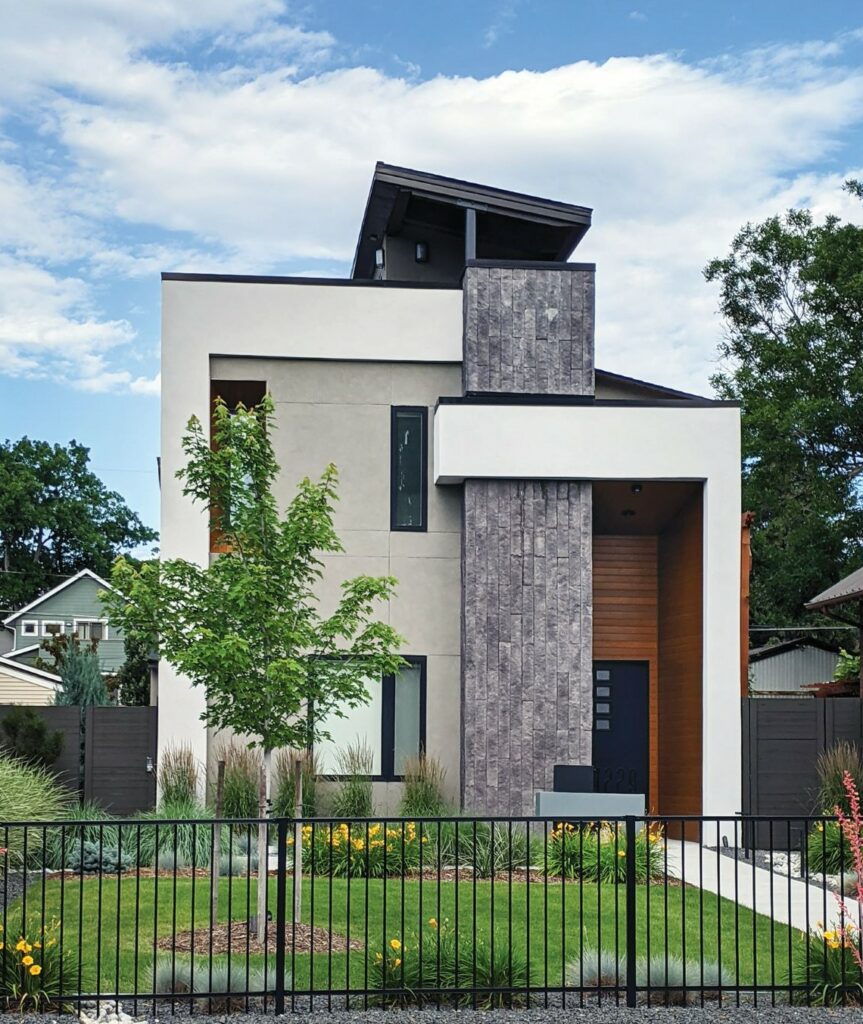
Owners of “wedding cake” style homes gave a variety of reasons for their decisions to choose that style, though most related to a form they found met their families needs. Mike Shuman purchased his modern style home because it prioritized an open floor layout more than multiple smaller rooms, which fit his family’s lifestyle of having company over and entertaining. That includes using the roof deck, though he also understands the critique on the loss of privacy from taller homes. Andee-Dawn Roth purchased hers because of the “modern, clean lines” of the home and because many older bungalows moved master bedrooms to the basement, which didn’t work for her family who are around 6’ tall. She likes the variety of home styles in the neighborhood and thinks more homogenous styles like the Central Park neighborhood or some planned Denver suburbs are “kind of boring,” adding “I like seeing different styles of homes. It brings more character.” Chris Leggee noted that “neighborhoods change, construction technology changes,” adding “why wouldn’t you want to have a full roof deck to enjoy? It’s an oasis away from the cityscape.” Frank McDermott had possibly the strongest response to the overlay, saying “The proposal is willfully ignorant of the last 20 years of development in Sunnyside, neutering any of their claims to an ‘existing character’ that I recognize,” adding “I see no public benefit from these proposals. They do not advance safety, efficiency, durability, or value, only an anecdotal and inaccurate sense of style. I think it’s pretty abhorrent for a neighbor to try to impose these style guidelines on their other neighbors when I see the diversity of architecture as a benefit to Sunnyside.”
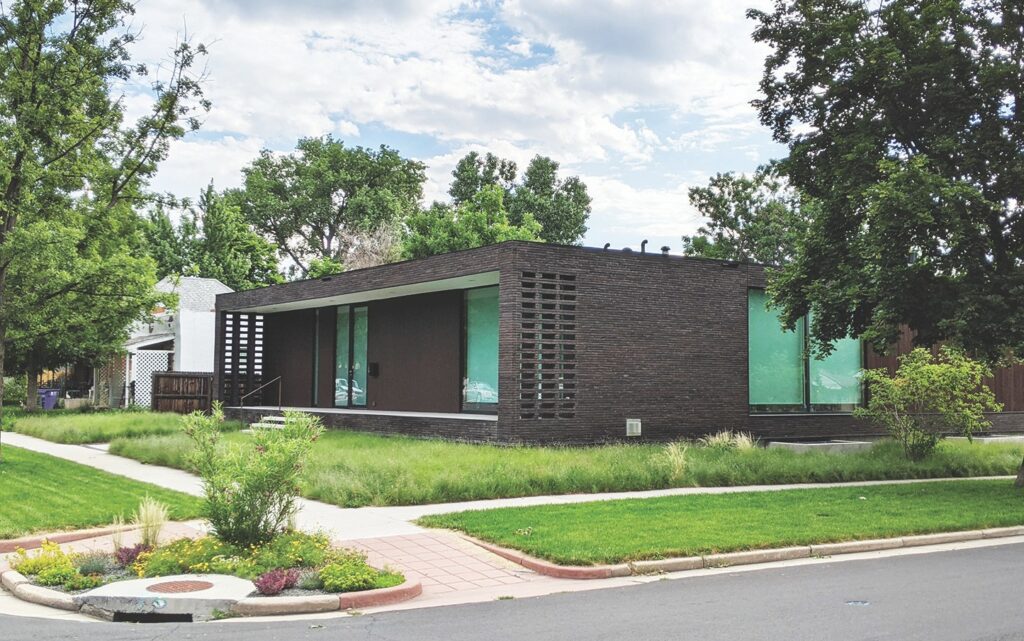
Several owners questioned why proponents were spending time on this rather than finding solutions to Denver’s home crisis, noting that even if this goes through, wealthier residents will still expand existing homes up to the 3000 sq ft limit or scrape and build something new of a different style than the wedding cake form (though it’s worth noting several proponents believe the overlay will have a beneficial impact on the housing crisis by reducing scrapes). Several modern home residents also questioned why another homeowner has the right to dictate a neighbor’s personal style preferences, especially when Denver doesn’t have the controlling HOAs of suburbs. A 30’ tall 3000 sq ft pitched roof Pepto Bismol pink home made of brick would meet the criteria, for example, while a 1200 square foot 23’ tall flat roofed red brick home wouldn’t. Few would find the pink home appealing, but it would still be someone’s right.
Hare, the head of the committee, emphasized his and the committee’s belief that a small group shouldn’t be making these decisions and that’s why the survey is now going out to Sunnyside residents. “The important thing is to come back to the community and make sure the vast majority of the community agrees,” he explained. Each proposed part of the overlay can be considered independently.
More information on the proposal and the online survey can be found at https://mailchi.mp/mailchimp/sunnysideoverlay.
Sandoval and Sunnyside United Neighbors, the neighborhood organization, are hosting several events for the community to learn more and give feedback:
Attend an In Person meeting:
Denver Bookbinding, 1401 W. 47th Ave.
Saturday, July 31st, 10am-11:30am
Thursday, August 12th, 6:30pm-8pm
Attend a virtual meeting:
Wednesday, July 28th, 6:30-8pm
The same information will be presented at both in person meetings. The Denver North Star will follow this and other zoning proposals as they continue.

Someone sounds jealous and/or control freaky! Bungalows are god awful ugly, and most of them are functionally obsolete. North Denver in the 80’s was horrible, but now people want to move into the modern houses.
Over 40 years ago, we chose to live in North Denver’s Grand View area. We bought a 1032 Tudor because of the architecture of the home. The homes are varied in design and together reflect the area’s love of the nostalgic buildings. If the style of our neighbor hood does not meet you requirements, you are invited to look elsewhere. Your right to choose should not impact my right to love my neighborhood.
> Your right to choose should not impact my right to love my neighborhood.
You have no such right.
I don’t like my neighbor’s haircut. He’s a grown man and he has dreadlocks. Does love of a more traditional hairstyle give me rights over his property?
You have a right to your own house and your own property. Other people can make their own decisons.
My daughter lives in the West Colfax neighborhood. It is currently also being decimated by scrap-off’s and new/modern construction. On the southwest corner of 14th and Winona or Xavier (please excuse my lack of details) a duplex/fourplex under construction caught fire and was destroyed. It burned the new occupied building next door and rendered it inhabitable. There is a 15′-20′ distance between the 2 buildings.
I do worry that the new buildings with a few bricks here and there and lots of other surface materials might create a “Mrs. O’Leary’s cow knocked over the lantern and burned down Chicago” type of scenerio. Denver was built out of brick after the city burned down twice in its infancy.